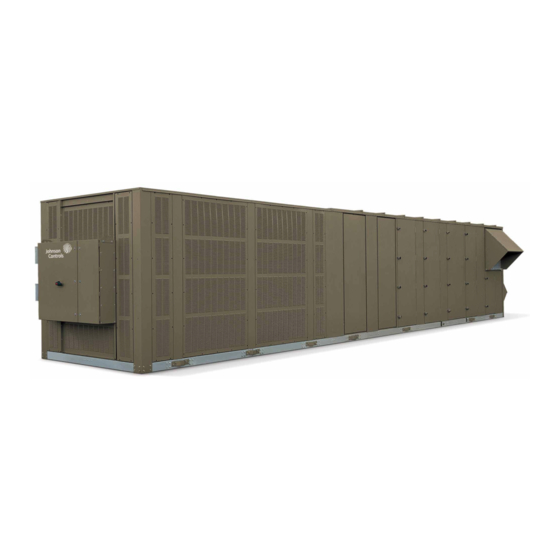Table of Contents
Advertisement
Quick Links
Advertisement
Table of Contents

Summarization of Contents
General Safety Guidelines
Safety Symbols
Explains the meaning of various symbols used throughout the document to indicate hazards.
Changeability of This Document
Change Bars
Describes how revisions are indicated within the document using change bars for clarity.
Nomenclature
Base Model Number
Provides a breakdown of the base model number and its components.
Section 1 – Introduction
Ecological and Economical Design
Highlights the unit's efficiency and environmental considerations.
Cooling and Heating
Discusses the unit's performance in cooling and heating operations.
Indoor Air Quality (IAQ)
Explains how the unit contributes to indoor air quality and ventilation.
Premium-Efficiency Motors
Details the availability and benefits of premium-efficiency motors used in the unit.
Condensing Section
Describes the components and function of the condensing section.
Section 2 – Installation
Rigging and Handling
Provides instructions and precautions for safely rigging and handling the unit.
Locations And Clearances
Specifies required locations and clearances for unit installation.
Section 3 – Start-Up
Crankcase Heaters
Explains the function and operation of crankcase heaters for compressor protection.
Checking the System Prior to Initial Start (No Power)
Lists pre-start checks required before applying power to the unit.
Section 4 – Maintenance
Periodic Maintenance – Monthly
Outlines monthly maintenance tasks for filters and linkages.
Filters
Instructions for checking filter cleanliness and replacement.
Linkages
Guidance on inspecting damper and operator linkages for smooth operation.
Compressors
Procedures for checking compressor oil levels and analysis.
Section 5 – Sequence of Operation
Unit Type
Explains configuration options for Constant Volume (CV) and Variable Air Volume (VAV) unit types.
Occupied / Unoccupied Mode
Details the four methods for placing the unit in occupied or unoccupied modes.
Section 6 – User Interface
Interface Methods
Describes the three methods for interfacing with the Simplicity Elite control.
Unit Controller Interface
Explains the four buttons and two displays on the unit controller.
Section 7 – Parameter Descriptions and Options
Table 36 - Definitions
Provides definitions for various menu items and parameters used in the Simplicity Elite system.
Section 8 – Service
Analog Input Operation
Describes the control operation of the analog inputs for monitoring unit parameters.
Temperature Sensors
Lists the types of temperature sensors used and their voltage/resistance relationships.
Faults and Lockouts
Light Emitting Diode
Explains the function of the LED on the Unit Controller for indicating status.
Alarm Codes
Details active alarms, their display, and how to recall them.
Alarm Troubleshooting
Refrigerant System Alarm Codes (01, 02, 03, 04, 09, 10, 11, 12)
Describes alarms related to compressor protection and high-pressure/low-pressure cutouts.
Low Pressure Cutout Alarm (09, 10, 11, 12)
Limit Switch Alarms (13, 14, 15)
Details alarms generated by limit switch circuits in heating sections.
Gas Heating Alarms (16, 17, 18)
Explains alarms related to gas valve operation and ignition control failures.
Space Temperature Sensor Alarm (19)
Supply Air Temperature Cooling Alarm (38)
Describes an alarm when supply air temperature exceeds cooling setpoints.
Supply Air Temperature Heating Alarm (39)
Describes an alarm when supply air temperature falls below heating setpoints.
Economizer Minimum Position Alarm (40)
Space Temperature Trending Alarm (41)
Alarm generated when space temperature deviates from setpoint over time.
Duct Static Low Pressure Alarm (42)
Alarm indicating low duct static pressure on VAV units.









Need help?
Do you have a question about the 130 and is the answer not in the manual?
Questions and answers